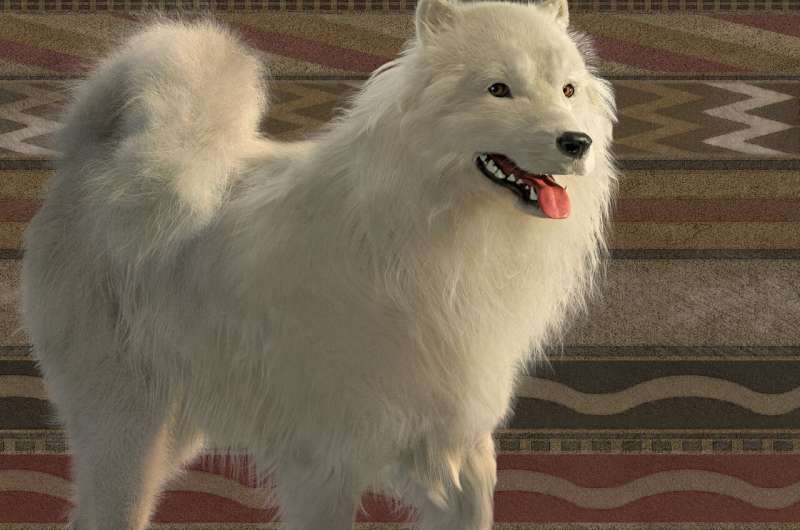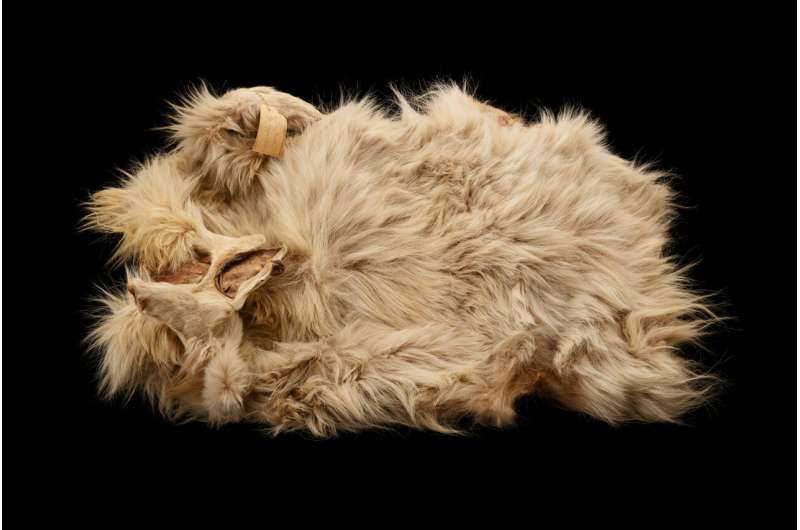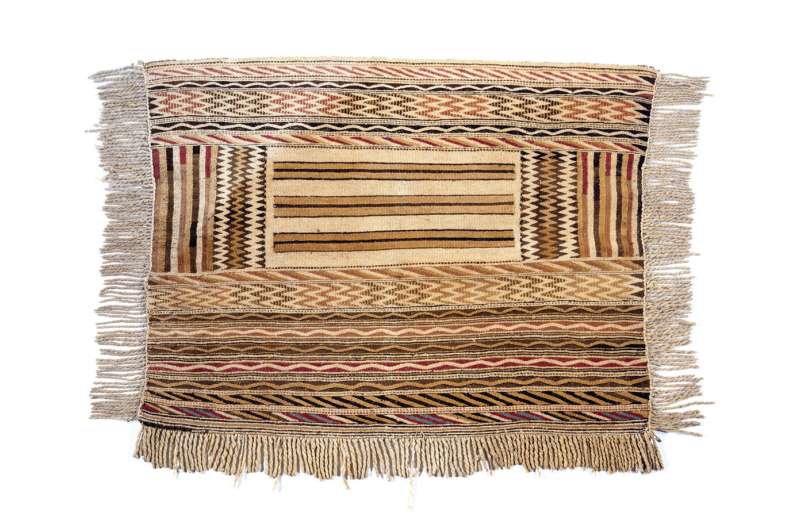This article has been reviewed according to Science X's editorial process and policies. Editors have highlighted the following attributes while ensuring the content's credibility:
fact-checked
peer-reviewed publication
trusted source
proofread
Researchers, Coast Salish people analyze 160-year-old Indigenous dog pelt

Researchers from the Smithsonian's National Museum of Natural History led a new analysis that sheds light on the ancestry and genetics of woolly dogs, a now extinct breed of dog that was a fixture of Indigenous Coast Salish communities in the Pacific Northwest for millennia. Anthropologist Logan Kistler and evolutionary molecular biologist Audrey Lin analyzed genetic clues preserved in the pelt of "Mutton," the only known woolly dog fleece in the world, to pinpoint the genes responsible for their highly sought-after woolly fur.
The study's findings, published in the journal Science, include interviews contributed by several Coast Salish co-authors, including Elders, Knowledge Keepers and Master Weavers, who provided crucial context about the role woolly dogs played in Coast Salish society.
"Coast Salish traditional perspective was the entire context for understanding the study's findings," said Kistler, the museum's curator of archaeobotany and archaeogenomics.
Coast Salish tribal nations in Washington state and British Columbia bred and cared for woolly dogs for thousands of years. Prized for their thick undercoats, the dogs were sheared like sheep and often kept in pens or on islands to carefully manage their breeding and to care for the canines' health and vitality.
Coast Salish weavers used the dogs' wool to craft blankets and other woven items that served a variety of ceremonial and spiritual purposes. Woolly dogs themselves possessed spiritual significance and were often treated as beloved family members. As emblems for many Coast Salish communities, woolly dogs adorned woven baskets and other art forms.
By the mid-19th century, this once thriving dog wool-weaving tradition was in decline. In the late 1850s, naturalist and ethnographer George Gibbs cared for a woolly dog named Mutton. When Mutton died in 1859, Gibbs sent his pelt to the nascent Smithsonian Institution, where the fleece has resided ever since. However, few were aware of the pelt's existence until it was rediscovered in the early 2000s.
Lin first learned about Mutton when she was a Peter Buck postdoctoral fellow at the museum in 2021.
"When I saw Mutton in person for the first time, I was just overcome with excitement," said Lin, who is now a postdoctoral researcher at the American Museum of Natural History. "I had heard from some other people that he was a bit scraggly, but I thought he was gorgeous."
She was surprised to find out that virtually no work had been done on the genetics of woolly dogs, which disappeared around the turn of the 20th century. She teamed up with Kistler and they reached out to several Coast Salish communities to gauge their interest in working together on a potential research project on woolly dogs.

Many in the Coast Salish communities were eager to share their knowledge.
"We were very excited to participate in a study that embraces the most sophisticated Western science with the most established Traditional Knowledge," said Michael Pavel, an Elder from the Skokomish/Twana Coast Salish community in Washington, who remembers hearing about woolly dogs early in his childhood. "It was incredibly rewarding to contribute to this effort to embrace and celebrate our understanding of the woolly dog."
To complement the perspectives they received from Pavel and other Coast Salish people from British Columbia and Washington state (the text from their interviews is available in the study's supplementary materials), Lin, Kistler and their colleagues began analyzing Mutton's genetic code.
They sequenced the woolly dog genome and compared it with the genomes of ancient and modern breeds of dogs to determine what set woolly dogs apart. They also identified certain chemical signatures called isotopes in Mutton's pelt to determine the dog's diet and teamed up with noted natural history illustrator Karen Carr to create a life-like reconstruction of what Mutton looked like in the 1850s. Carr's work is the first in-depth reconstruction of a Coast Salish woolly dog in nearly three decades.
Based on the genetic data, the team estimated that woolly dogs diverged from other breeds up to 5,000 years ago—a date that lines up with archaeological remains from the region. They also discovered that Mutton was genetically similar to pre-colonial dogs from Newfoundland and British Columbia.
The researchers estimate that nearly 85% of Mutton's ancestry can be linked to pre-colonial dogs. This ancient ancestry is surprising because Mutton lived decades after the introduction of European dog breeds. This makes it likely that Coast Salish communities continued to maintain woolly dogs' unique genetic makeup until right before the dogs were wiped out.
In total, the team analyzed more than 11,000 different genes in Mutton's genome to determine what gave woolly dogs their fluffy fleece and wool fibers that could be spun together to create yarn. They identified 28 genes that have links to hair growth and follicle regeneration. These included a gene that causes a woolly hair phenotype in humans, and another linked to curly hair in other dogs. Similar genes were even activated in the genomes of woolly mammoths.
However, Mutton's genetics could tell the researchers little about what caused the dogs to decline. Traditionally, scholars have speculated that the arrival of machine-made blankets to the region in the early 19th century made woolly dogs expendable. But insights from Pavel and other traditional experts revealed that it was improbable that such a central part of Coast Salish society could be replaced.
Instead, woolly dogs were likely doomed by numerous factors impacting the Coast Salish tribal nations after European settlers arrived. Due to disease and colonial policies of cultural genocide, displacement and forced assimilation, it likely became increasingly difficult or forbidden for Coast Salish communities to maintain their woolly dogs.
"It was thousands of years of very careful maintenance lost within a couple of generations," Lin said.

But despite their disappearance, the memory of woolly dogs is still embedded into Coast Salish society. And Pavel thinks their understanding of woolly dogs is only getting clearer thanks to the new research effort.
"All of our communities held a certain aspect of knowledge about the woolly dog," Pavel said. "But when woven together, as a result of participating in this study, we now have a much more complete understanding."
More information: Audrey T. Lin et al, The history of Coast Salish 'Woolly Dogs' revealed by ancient genomics and Indigenous knowledge, Science (2023). DOI: 10.1126/science.adi6549. www.science.org/doi/10.1126/science.adi6549
Ludovic Orlando, The history of the Coast Salish "woolly dogs", Science (2023). DOI: 10.1126/science.adm6959 , www.science.org/doi/10.1126/science.adm6959
Journal information: Science
Provided by Smithsonian





















